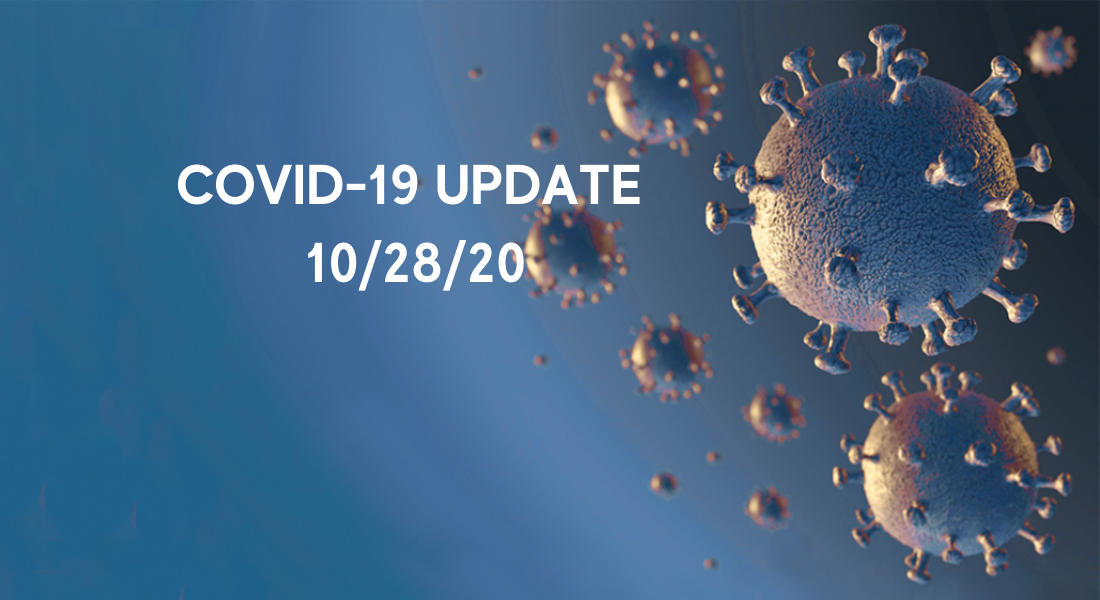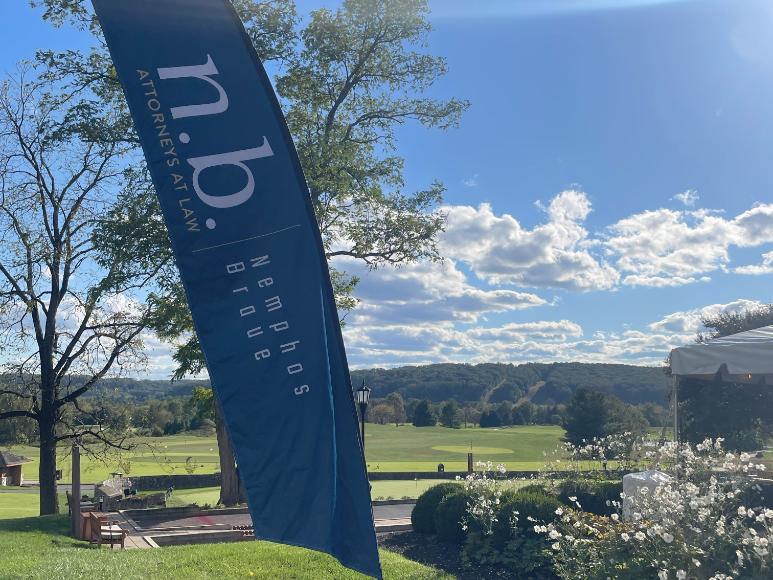October 28, 2020 – Joint Covid-19 Response Legislative Workgroup
Dr. Wilbur Chen, Professor of Medicine Chief, Adult Clinical Studies Section
Vaccine “Platforms”
Traditional Approach:
- Chicken Eggs
Newer Approaches:
- Live attenuated
- Recombinant
- Cell Culture
- Adjuvants
Future Approaches:
- DNA/mRNA
- Virus-like particles and Virosomes
- Virus vectored
Leading Covid-19 Vaccines
- Pfizer, BNT-162 (mRNA)
- Moderna, mRNA-1273 (mRNA)
- AstraZeneca/Oxford, ChAdOx1 nCoV-19 (virus vector)
- Novavax, NVX-CoV2373 (nanoparticle/adjuvant)
Licensure Pathway of Covid-19 Vaccines
Phase 1 – Safety (n=100)
Phase 2 – Safety and Immune Responses (n=100s to 1000s)
Phase 3 – Safety and Efficacy (n=10,000s)
U.S. FDA: Guidance for Licensure of Covid-19 Vaccines
- Populations – generalizable, including high-risk populations
- Efficacy:
- Prevent symptomatic, lab-confirmed infection
- If possible, prevent more sever infections (e.g., respiratory or kidney failure)
- Statistics – minimum 50% efficacy
What can (and cannot) be evaluated?
Safety:
- Injection site reactions
- Systemic reactions
- Common adverse events
- Rare, but serious adverse events
Efficacy:
- Prevent symptomatic illness caused by Covid-19
- Not designed to assess asymptomatic infections
- Medical complications
- Hospitalizations
- Deaths
Vaccine Policy & Implementation
- Limited Supply Allocation
- Prioritization to Highest Risk Populations (HCW, essential workers)
- Maximization of Utility (maximum benefit)
- Equitability & Ethics framework
- National Guidelines vs. local jurisdictional flexibility
- Logistics – Access & Delivery
- Message of Public Health Value
Population Risk Groups
- Healthcare personnel, 20 million
- Hospitals, longer-term care facilities, outpatient, home health, pharmacies, EMS, public health
- Essential workers, non-healthcare, 60 million
- Food & agriculture, transportation, education, energy, water & wastewater, law enforcement
- Older adults ≥65 years, 53 million
- High Risk Medical Conditions, >100 million
- Special populations: children, pregnant women
- Communities of color & disproportionate burden of disease
Total U.S. Population ~330 million
Dr. David Marcozzi, Associate Professor University of Maryland School of Medicine, Covid-19 Incident Commander
UMMS-UMB Unified Command
- A joint crisis management structure governing all Covid-19 related activities within our academic health system, bridging state-of-the-art science with optimal healthcare delivery.
- Our “Stronger as a System” approach transfers patients and shares resources and staff to assure the right care at the right time for all our patients while maintaining a protected workforce.
General Considerations
- Entering a high-risk period
- Following public health guidance now is critical
- Other issues:
- Testing
- Contract tracing
- Surge capacity
- Personal Protective Equipment
- Workforce shortages
- PPE fatigue
- Mental health
- Vaccine
The Trust Challenges
In a recent Goucher College poll of 1,002 Maryland adults between September 3 and October 4: Half of Maryland residents surveyed that they would not take a federally approved Covid-19 vaccine today even if it was offered free.
Vaccine Preparation Work Group Issue
- Workforce/Patient Prioritization
- Population/Community health efforts
- Information Technology
- Logistics/Supply Chain
- Public health education/Communications
Workforce Considerations
- Prioritization of workforce based on NASEM recommendations
- Develop distribution plan for hospitals
- Develop operational construct for vaccination
Patient and Community Efforts
- In coordination with MD plan
- Ongoing planning considerations:
- Outpatient/Inpatient – Inpatient will have overlap with outpatient considerations
- Community Distribution – support established efforts and build new administration sites as requested
Information Technology
- Utilizes IT to assist with registering, tracking, ordering, documentation and data reporting requirements
- ImmuNet, PrepMod, etc
- Assuring linkages with hospitals’ HER will improve operational efficiencies
- Inpatient
- Outpatient
- Community
Logistics/Supply Chain
- Define logistics requirements
- Cold chain storage
- Procure ancillary equipment for internal and external vaccine administration
Public Health Education/Communications
- Public reservations for vaccine acceptance
- Community survey ongoing
- Share results
- Promote public health education and a communications campaign to dispel myths/misinformation and build trust and confidence in the vaccine
- Internal and external
Q&A
Senator Jim Rosapepe: This is the UMMS internal plan not everyone’s plan correct?
Dr. David Marcozzi: You are correct. We were asked to speak around the UMMS strategy on vaccination. We are already linked with the Maryland Department of Health on multiple aspects including, being part of their Technical Advisory Group. So it is a coordinated strategy.
Senator Jim Rosapepe: Who decides how vaccines get distributed?
Dr. Wilbur Chen: We hope there will be a national level coordination, but there will also be flexibility such that when these vaccines are handed down at the state level there will be jurisdictional value from the state getting involved. Right now we don’t know what the national level coordination will look like.
Senator Delores Kelley: Will there be training for pharmacists?
Dr. Wilbur Chen: That is something I think many groups are trying to look forward to. Right now we don’t know if the distribution of these vaccines will be widescale enough to distribute at that level to the local pharmacies. In the beginning there may only be centralized distribution sites.
Senator Clarence Lam: Is there a way to distribute this without the use of cold storage? Maybe through dry ice?
Dr. Wilbur Chen: Whether or not there will be an annual dosage we don’t know yet. We can try to use dry ice; we can try to use liquid nitrogen to try to achieve the cold temperature needed. I’m hoping there will be somewhat of a coordinated effort.
Phyllis Arthur, Vice President Infectious Diseases & Diagnostic Policy Biotechnology Innovation Organization
Clinical & Preclinical Stage Vaccine Pipeline
Operation Warp Speed
Path to Distribution of Vaccines
ACIP Prioritization Framework
Groups prioritized for early phase vaccination:
- Overlapping groups with significant heterogeneity
- Communities of color are significant portion of each population
- Accounts for > half of U.S. adults
- Framework informed by National Academies at Johns Hopkins frameworks
Dr. Rick Nettles, Vice President of Medical Affairs, Janssen Pharmaceutica, Johnson & Johnson
We have mobilized a multifaceted response to Covid-19
Developing a vaccine leveraging our AdVac® Technology
Screening our late-stage and marketed compound library to identify potential solutions for immediate relief
Exploring immunomodulators to protect against the over-active immune response we see in some patients
Clinical experience with Janssen Ad26-based vaccines >110,000 people vaccinated
- Completed and ongoing studies in: RSV, HIV, Ebola, Malaria, Filo, Zika, HPV
- Adults
- Elderly
- HIV positive adults
- Pregnant and breastfeeding women
- Children (1-17 years)
- Infants (4-11 months)
Charting a Critical Path Forward
The months ahead provide significant, data-lead milestones that allow us to communicate our scientific progress.
Initiation of Phase 3 ENSEMBLE Clinical Trial
- The first participants have been dosed in the Phase 3 trial (ENSEMBLE) evaluating safety and efficacy of Janssen’s investigational Covid-19 vaccine candidate.
- The trial will aim to enroll 60,000 participants in Argentina, Brazil, Chile, Colombia, Mexico, Peru, South Africa, and the United States.
- We are committed to ensuring representation from populations disproportionately impacted by Covid-19. In the U.S., this includes significant representation of Black, Hispanic/Latinx, American Indian and Alaskan Native participants.
- The company is committed to transparency and sharing information related to the Phase 3 ENSEMBLE study – including the study protocol.
Access and Availability
- Agreements: We have entered into agreements with international governments, including the U.S. government for the purchase of 100 million doses of our investigational Covid-19 vaccine. We have agreed in principle to supply the U.K. government with 30 million doses, Canada for 38 million doses, and to provide European Commission with 200 million doses.
- Ongoing Discussions: We are also participating in ongoing discussions with many stakeholders, including individual national governments and global organizations, regarding existing and new procurement mechanisms.
Christie Bloomquist, Vice President of Corporate Affairs, AstraZeneca
AZD1222 (ChAdOx1 nCoV-19): the technology
- Based on existent recombinant simian adenovirus vector (ChAdOx1)
- Non-replicating
- Avoids issues with pre-existing immunity to human adenovirus
- Introduces strong B and T cell responses after single vaccination
- Early clinical safety
- Contains genetic material of the SARS CoV-2 spike protein
Long-acting Antibody (LAAB) Combination
- Targeting the SARS CoV-2 spike protein as a combination of two mAbs
- Pre-clinical data published in Nature by Zost et. al, 2020
- U.K. government agreement in principle of 1 million doses by H1 2021
- Phase 1 trial started in August
U.S. Government Agreements
Q&A
Senator Jim Rosapepe: Do your agreements with the federal government bar you from selling the approved vaccine in the private market?
Dr. Rick Nettles: I do not believe that they do. However,the supply for the initial timepoint there would not be enough available to go through a parallel path in the commercial market.
Christie Bloomquist: Same, under our commitment we will first deliver the 300 million doses of the vaccine. If there is potential to work with a private market after of course we will have those conversations, but our first priority is to supply the government with the doses they have purchased.
Phyllis Arthur: It is important to think of this in two phases. The first phase everyone is operating under the pandemic, what happens with the Covid-19 vaccines as we pass through this pandemic time will really depend on how the CDC and the thought leaders in public health think about how the vaccine gets used in the long-term.
Delegate Eric Luedtke: As a state, where should we be looking to support the development of technologies in our readiness with our biotech sector to continue to innovate?
Christie Bloomquist: It would be a robust ecosystem. You need all the different parts working together. It is having the right workforce and having companies that are committed to research and development. It’s having that early research piece, I think you need all of that working.
Phyllis Arthur: I think that what Maryland has that many other states don’t are companies of all different sizes, that is the kind of ecosystem we’d like to mirror across the United States.
Robert Neall, Secretary, Maryland Department of Health
Covid Vaccine Planning Basics
- Maryland’s mass COVID-19 vaccination planning efforts have been underway with our federal partners since Spring 2020.
- The plan is a draft and will evolve as more information becomes available.
- The US Centers for Disease Control and Prevention (CDC) will be the central distributor for vaccines.
- New information is coming from the federal government on a continual basis.
- There are several vaccine products in development and several likely candidates for the first vaccine out of the gate.
Pending Considerations
- Need more information from the federal government on distribution, cost-sharing, federally-provided supplies.
- No vaccines have been approved by the FDA yet. As vaccines receive emergency use authorization, they will be reviewed by the Technical Advisory Group.
- Health care providers are currently registering with the State to administer Covid-19 vaccine. Local health departments, hospital systems, and pharmacies will also be key partners for vaccine administration.
Planning for Vaccination Response
- The Plan is based on the CDC COVID-19 Vaccination Interim Playbook for Jurisdiction Operations.
- Planning will evolve as the federal government releases information, including recommendations from the CDC Advisory Committee on Immunization Practices (ACIP) regarding priority groups.
Jinlene Chan, Department Secretary, Public Health Services, Maryland Department of Health
Phased Approach
- Phase 1
- Vaccination of critical populations (will be aligned with ACIP guidance once available).
- Limited availability of vaccine.
- Waiting on CDC to notify the State of vaccination supply and distribution.
- Phase 2
- Begins when Phase 1 targets have been met.
- Vaccination of the general public.
- Vaccination efforts continue until every Marylander who wants a vaccine is able to get one.
Plan Components
Key Components of the Plan:
- Provider Enrollment
- Vaccine Ordering and Distribution
- Vaccine Administration
- Communication and Outreach
Provider Enrollment
- Providers interested in administering COVID-19 vaccine will register with the MDH immunization information system, ImmuNet. MDH is currently enhancing its systems to handle the added influx of users and information.
- MDH will work through partners to encourage providers to enroll to ensure that there are sufficient vaccination providers in the State to reach all Marylanders.
Vaccine Ordering and Distribution
- Registered providers will place their COVID-19 vaccine orders in the ImmuNet system.
- Vaccine will be shipped directly to the provider from CDC’s distributor.
- MDH will work with providers to track inventory and administration of vaccine and to ensure that if two doses are required, people receive same product each time.
Vaccine Administration
- The State will work with federal partners, local hospital systems, local health departments, and pharmacies to administer vaccine to Phase 1 priority groups.
- Once vaccine is widely available (Phase 2), Marylanders will be able to receive vaccinations through their health care provider or at a pharmacy (similar to a flu shot).
- Eventually, any Maryland resident that wants to be vaccinated will be able to receive a vaccine.
- Health equity considerations are crucial to ensure access across all populations.
Phase 1 Priority Groups
* Subject to change based on final ACIP recommendations
Communication and Outreach
- Some groups may be more hesitant to vaccinate than others.
- Messaging will need to provide facts about the vaccine(s), instill confidence, and encourage vaccination.
- Outreach efforts will need to be culturally competent and take into account the needs of different populations throughout the state.
Community and Stakeholder Involvement
- Two advisory groups are being established to provide guidance and recommendations to the State as COVID-19 Vaccine efforts progress:
- Technical Advisory Group
- Stakeholder Advisory Group
- As planning continues, the stakeholder community will be involved in feedback on ongoing planning and outreach efforts.
Q&A
Delegate Joseline Pena-Melnyk: Will you make the same promise as the Governor Cuomo of New York has made in that they won’t distribute a vaccine to hospitals and local health department’s if their experts aren’t confidant that it is safe to do so? Are you going to have a post vaccination monitoring program? In your Phases where is priority given, how can you assure us people of color will be a priority?
Jinlene Chan: For us safety and efficacy of the vaccine is of highest priority and that is really first and foremost. We are very pleased to hear the information and transparency coming from the pharmaceutical industry, to better understand the data. That’s the reason why we stood up our Technical Advisory Group, and we are in process of doing that right now. The information that comes through about each and every vaccine has to be about safety and efficacy first and foremost. That’s what our main focus is. If there are concerns or doubt we certainly want to be sure we understand the reasons for those, and want to be sure any vaccine we push out meets that very high bar. We are working with the CDC in terms of making sure to monitor adverse events after a vaccine is administered to individuals. There are a number of different systems in place at the federal level and I believe we will be working to make sure that any adverse events reporting is tied into the federal system. As we look at areas of highest risk that is a consideration when we look at populations that have been affected. Information about impact will be taking into account as we allocate this limited resource in the beginning and throughout.
Senator Paul Pinsky: Regarding the slide titled “Phase 1 Priority Groups”. I see a category for judiciary, but I don’t see one for education workers. Education workers may be required to return to work. Where do teachers and support staff fit into Phase 1 or if they are not included in Phase 1 why not?
Jinlene Chan: All of this is subject to change. Phase 2 is where many of the essential workers are. That would include education. This is in looking at the National Academy of Sciences recommendations and others. Our highest priority is people that are at the highest risk and individuals who are in contact with or may pose a risk to individuals in congregate care settings. Those are the individuals that would be highest priority. The initial vaccine supplies will be limited so even among the highest priority populations within congregate care settings and others there will be some limited vaccine and a need to allocate among them.
Delegate Sheree Sample-Hughes: Have you done an assessment or are planning to do an assessment on which areas may not be prepared to accept the vaccine in regard to storage capacity?
Jinlene Chan: These are the types of things that we continue to work on, an initial assessment has been done. We are putting in orders for supplies and other things to ensure we have the ability to provide vaccines. This is also predicated on the type of vaccine that will be available.
Senator Jim Rosapepe: Are you assuming that in Phase 1 the only source of vaccine will be from the federal government? Are you contemplating a Plan B where the state has to procure the vaccine on its own?
Robert Neall: I think the major stream is going to be from the federal government because they purchased hundreds of millions of doses. The pharmaceutical firms are obligated to fill those orders first. I’m not aware of any other opportunities.
Senator Jim Rosapepe: Are you going to prohibit people from buying the vaccine on their own?
Robert Neall: I haven’t really contemplated that decision. The vast majority of these vaccines are going to be distributed at no cost, so I don’t know why a physician would buy a vaccine from a vendor when there could be an adequate allocation at no charge.
Delegate Michael Jackson: Regarding priority groups. Will there be a prioritization for first responder’s family members?
Jinlene Chan: We’re going to rely very much on the CDC and ACIP advisory committee on immunization practices for guidance on that.
Senator Clarence Lam: What’s the contingency plan on if the federal government is not able to procure essential supplies for the vaccine?
Jinlene Chan: Given the experience we all have we will be moving forward with purchasing some of the ancillary supplies like syringes, alcohol wipes, sharps containers.
Senate President Bill Ferguson: Where does the buck stop for the vaccine distribution plan?
Robert Neall: I think it stops with the Maryland Department of Health. It’s our plan, we’re responsible for carrying it out and I think we will be the major focal point.
Dr. Letitia Dzirasa, Commissioner of Health, Baltimore City Health Department
We do have a local mass vaccination taskforce, Which includes local government agencies. They are responsible for reviewing, analyzing, and developing plans for vaccine distribution. It is largely based on lessons learned from H1N1.
We support and participate in the Maryland Department of Health Covid-19 Vaccine Workgroup.
Q&A
Senate President Bill Ferguson: Do you agree that the Department of Health will be the entity responsible for the effective and successful distribution of the vaccine?
Dr. Letitia Dzirasa: Yeah I think one of the things that has been successful in the city is the partnerships we’ve formed at the local level. We work closely with local community based organizations and they have helped to be a messenger. We will have to be on the ground working with local partners. We also have a flu vaccine taskforce, which consists of multiple healthcare partners.
Senator Melony Griffith: Have we given any thought to using community health workers for the systems that have been put in place around contact tracing to reach those hard to reach groups?
Dr. Letitia Dzirasa: Yeah absolutely, we have been grant funded to start a program called the Baltimore Health Core, which implores community health workers to begin with public outreach and education.




